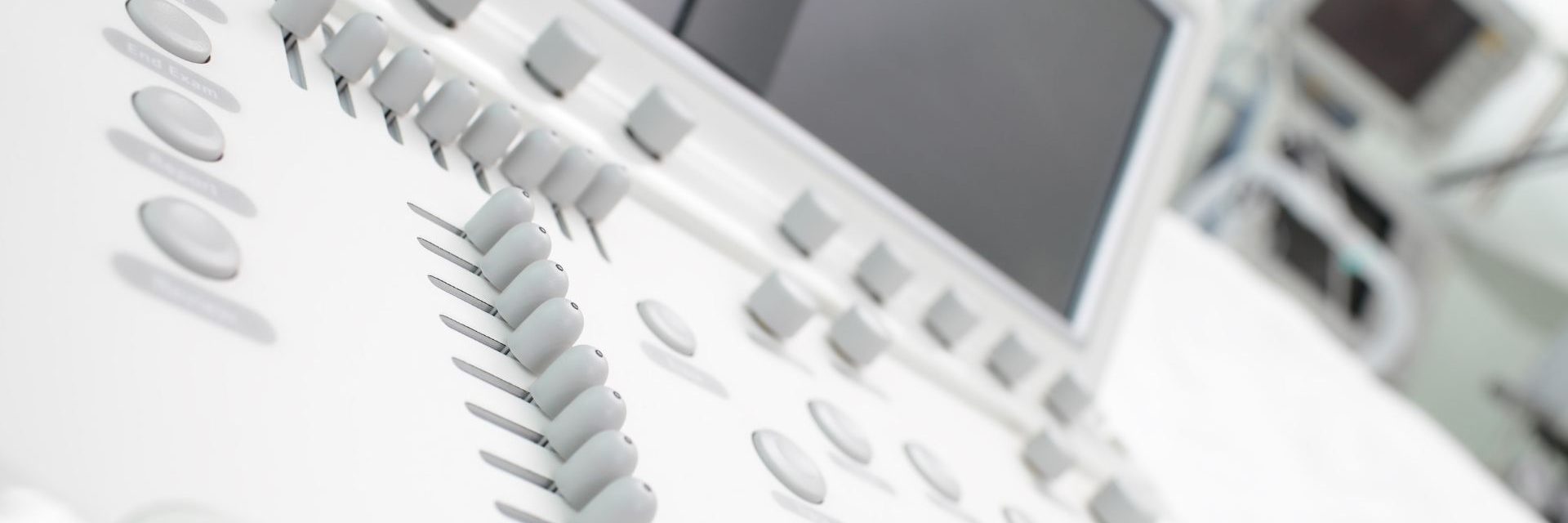
DECIPHERING THE NATIONAL MEDICAL DEVICES (NMD) POLICY, 2023
India ranks among the top 20 medical device markets worldwide and is the fourth-largest market for
medical devices in Asia after Japan, China, and South Korea. The Drugs and Cosmetics Act, 1940
primarily governs the medical device industry in India. The Central Drugs Standard Control
Organisation (CDSCO) enacted the Medical Device Rules, 2017. Further, on February 11, 2020, the
Ministry of Health and Family Welfare (MoH&FW) amended the Medical Devices Rules, 2017.
Ministry of Chemicals and Fertilizers (Department of Pharmaceuticals) on 2nd May, 2023 notified the new “National Medical Devices Policy, 2023”.
In India, the market for medical devices is a crucial and vital component of the country's healthcare system. It serves as a key foundation in the healthcare delivery system, aiding in the accomplishment of the main goals of the National Health Policy (NHP), 2017. Several different disciplines constitute the medical device industry, with the following broad classification i.e. (a) Electronic equipment (b) Implants (c) Consumables and Disposables (d) Surgical instruments and (e) In-Vitro Diagnostic Reagents. Further, there are categories of devices across 24+1 (IVD) sub-categories as per the CDSCO.
Ministry of Chemicals and Fertilizers (Department of Pharmaceuticals) on 2nd May, 2023 notified the new “National Medical Devices Policy, 2023”.
In India, the market for medical devices is a crucial and vital component of the country's healthcare system. It serves as a key foundation in the healthcare delivery system, aiding in the accomplishment of the main goals of the National Health Policy (NHP), 2017. Several different disciplines constitute the medical device industry, with the following broad classification i.e. (a) Electronic equipment (b) Implants (c) Consumables and Disposables (d) Surgical instruments and (e) In-Vitro Diagnostic Reagents. Further, there are categories of devices across 24+1 (IVD) sub-categories as per the CDSCO.
The Requirement for a Policy:
[1] Sustained growth and development of the medical device sector in a holistic and coordinated
manner- A comprehensive policy is urgently needed to accelerate the medical device sector's growth
and realise its enormous potential to support the goals of public health by making high-quality
products available. The current medical policy must establish a broad framework supported by
guiding strategies to ensure the sector's long-term growth and development in a comprehensive and
coordinated manner.
[2] Meet the public health objectives of access, affordability, quality and innovation- A robust and efficient regulatory framework, assistance with training and capacity building programmes, promotion of higher education to foster talent and skilled resources in line with industry requirements and focus on innovation are all necessary to support the medical device sector in realising its full potential.
[3] Competitive, self-reliant, resilient and innovative industry- provides the medical device industry the support and guidance it needs to grow into a vibrant, innovative, competitive, and self-sufficient sector that serves the needs of the Indian and global healthcare needs.
[2] Meet the public health objectives of access, affordability, quality and innovation- A robust and efficient regulatory framework, assistance with training and capacity building programmes, promotion of higher education to foster talent and skilled resources in line with industry requirements and focus on innovation are all necessary to support the medical device sector in realising its full potential.
[3] Competitive, self-reliant, resilient and innovative industry- provides the medical device industry the support and guidance it needs to grow into a vibrant, innovative, competitive, and self-sufficient sector that serves the needs of the Indian and global healthcare needs.
Policy Guidelines:
[1] Vision- The Policy aims to establish an innovative and globally competitive Indian medical devices
sector with a patient-centric approach supported by world-class infrastructure, to meet the evolving
healthcare needs of patients.
[2] Mission- The Medical Devices Policy will make it easier for the industry to expand and meet the needs of both the Indian and global markets for medical devices. The following missions are methodically accomplished, which lays out a plan for the sector of medical devices to grow quickly while fostering safety and quality:
a) Access & Universality
b) Affordability
c) Quality
d) Patient centred & Quality care
e) Preventive & Promotive Health
f) Security
g) Research and Innovation
h) Skilled manpower
[2] Mission- The Medical Devices Policy will make it easier for the industry to expand and meet the needs of both the Indian and global markets for medical devices. The following missions are methodically accomplished, which lays out a plan for the sector of medical devices to grow quickly while fostering safety and quality:
a) Access & Universality
b) Affordability
c) Quality
d) Patient centred & Quality care
e) Preventive & Promotive Health
f) Security
g) Research and Innovation
h) Skilled manpower
Medical Device Sector Promotion Mechanisms:
A set of strategies that will cover six major areas of concern that will assist and direct the medical
devices sector in achieving its goals. These areas have been chosen in light of both the sector's
present problems and its future opportunities for realising its full potential.
[1] Regulatory streamlining- The need for further regulatory streamlining that balances patient safety with product innovation, reduces compliance burdens, and improves ease of conducting research and business, for which several interventions has been planned in this direction.
These are:
a) A 'Single Window Clearance System' for Medical Device Licensing is being planned in conjunction with the National Single Window System (NSWS) to prevent duplication of work and relieve users of any unnecessary compliance burden.
b) The formulation and adoption of Indian Standards for Medical Devices is a goal that Indian Standards setting-bodies like the Bureau of Indian Standards (BIS) and sectoral standards development organisations must achieve. By gradually extending the standards in terms of procedures, goods, wireless technologies, and performances, they will increase the level of standardisation, quality, and enable indigenous industry to become more competitive globally.
c) By properly aligning the provisions of the Drugs (Prices Control) Order (DPCO), 2013, through the National Pharmaceutical Pricing Authority (NPPA), a framework for a pertinent pricing regulation will be created in order to provide all citizens with high-quality, cost-effective medical devices.
d) For the purpose of facilitating regulatory compliance in the research phase and the development of products that are ready for the market, starting with the design phase itself and including testing needs, a guidance framework for researchers, innovators, and entrepreneurs will be created.
e) To ensure ethical marketing of medical devices, an institutional arrangement is proposed that would align National Medical Commission (NMC) regulations with industry associations' codes of ethics, etc.
[2] Enabling infrastructure- The National Industrial Corridor Programme and the proposed National Logistics Policy 2021, both of which fall under the purview of PM Gati Shakti, envision the establishment and strengthening of large medical device parks, clusters, and facilities equipped with world class common infrastructure in close proximity to economic zones with the necessary logistics connectivity.
[3] Facilitating Research and Development (R&D) and Innovation- In addition to the Department's proposed National Policy on R&D and Innovation in the MedTech- Pharma Sector in India, the policy aims to advance research and development in India. Additionally, it aims to create innovation hubs, "plug and play" infrastructures, centres of excellence in academic and research institutions, and support for start-ups.
[4] Attracting investments- The policy plans to implement the following additional steps like Make in India, Ayushman Bharat, Heal-in-India, and the Start-up Mission, the policy promotes private investments, series of funding from venture capitalists, as well as Public-Private Partnerships (PPP) to support domestic manufacturing, increase competitiveness, and foster a supportive environment for manufacturing in addition to the current programmes and interventions.
[5] Developing Human resources- The industry needs a consistent supply of skilled workers across the value chain, including scientists, regulators, health experts, managers, technicians, and other professionals, in order to develop a skilling ecosystem that is also aligned to the Skill India programme. This is what the policy anticipates:
a) Utilising the resources offered by the Ministry of Skill Development and Entrepreneurship's skill ecosystem to develop qualifications for professional skilling, retraining, and upskilling, as well as certification of candidates and professionals on relevant qualifications for the medical device industry. All of these skill-building courses will adhere to the National Skill Qualification Framework (NSQF), and skill-building activities will be integrated with the Skill India Portal (SIP).
b) In order to ensure the availability of skilled labour for cutting-edge manufacturing and research, as well as for futuristic medical technologies, the policy will support multidisciplinary courses specifically designed for medical devices in existing institutions. This will result in future-ready MedTech human resources that can be used to meet the sector's changing needs.
c) A national database of the different skills needed in relation to the most recent manufacturing technologies used in the MedTech sector and the skills necessary to adopt those particular technologies will be created and updated on a regular basis in consultation with industry.
d) In order to collaborate with foreign academic and industrial organisations to develop medical technologies, a framework has been proposed for academic institutions working in the medical device sector.
[6] Brand promotion- In coordination with the Ministry of Commerce and Industry's initiatives, the policy aims to increase global competitiveness. Additionally, the Department will be able to address a variety of market access issues due to the establishment of a dedicated Export Promotion Council for the sector.
The policy plans to launch studies and projects to learn from the best manufacturing and skilling practises around the world in order to determine whether it is feasible to apply such successful models in India. Increase public awareness of medical device safety and standards, and make sure to communicate the value proposition to the public in a proactive manner. Encourage the creation of more forums that will bring together different stakeholders to exchange knowledge and create robust networks across the industry.
[1] Regulatory streamlining- The need for further regulatory streamlining that balances patient safety with product innovation, reduces compliance burdens, and improves ease of conducting research and business, for which several interventions has been planned in this direction.
These are:
a) A 'Single Window Clearance System' for Medical Device Licensing is being planned in conjunction with the National Single Window System (NSWS) to prevent duplication of work and relieve users of any unnecessary compliance burden.
b) The formulation and adoption of Indian Standards for Medical Devices is a goal that Indian Standards setting-bodies like the Bureau of Indian Standards (BIS) and sectoral standards development organisations must achieve. By gradually extending the standards in terms of procedures, goods, wireless technologies, and performances, they will increase the level of standardisation, quality, and enable indigenous industry to become more competitive globally.
c) By properly aligning the provisions of the Drugs (Prices Control) Order (DPCO), 2013, through the National Pharmaceutical Pricing Authority (NPPA), a framework for a pertinent pricing regulation will be created in order to provide all citizens with high-quality, cost-effective medical devices.
d) For the purpose of facilitating regulatory compliance in the research phase and the development of products that are ready for the market, starting with the design phase itself and including testing needs, a guidance framework for researchers, innovators, and entrepreneurs will be created.
e) To ensure ethical marketing of medical devices, an institutional arrangement is proposed that would align National Medical Commission (NMC) regulations with industry associations' codes of ethics, etc.
[2] Enabling infrastructure- The National Industrial Corridor Programme and the proposed National Logistics Policy 2021, both of which fall under the purview of PM Gati Shakti, envision the establishment and strengthening of large medical device parks, clusters, and facilities equipped with world class common infrastructure in close proximity to economic zones with the necessary logistics connectivity.
[3] Facilitating Research and Development (R&D) and Innovation- In addition to the Department's proposed National Policy on R&D and Innovation in the MedTech- Pharma Sector in India, the policy aims to advance research and development in India. Additionally, it aims to create innovation hubs, "plug and play" infrastructures, centres of excellence in academic and research institutions, and support for start-ups.
[4] Attracting investments- The policy plans to implement the following additional steps like Make in India, Ayushman Bharat, Heal-in-India, and the Start-up Mission, the policy promotes private investments, series of funding from venture capitalists, as well as Public-Private Partnerships (PPP) to support domestic manufacturing, increase competitiveness, and foster a supportive environment for manufacturing in addition to the current programmes and interventions.
[5] Developing Human resources- The industry needs a consistent supply of skilled workers across the value chain, including scientists, regulators, health experts, managers, technicians, and other professionals, in order to develop a skilling ecosystem that is also aligned to the Skill India programme. This is what the policy anticipates:
a) Utilising the resources offered by the Ministry of Skill Development and Entrepreneurship's skill ecosystem to develop qualifications for professional skilling, retraining, and upskilling, as well as certification of candidates and professionals on relevant qualifications for the medical device industry. All of these skill-building courses will adhere to the National Skill Qualification Framework (NSQF), and skill-building activities will be integrated with the Skill India Portal (SIP).
b) In order to ensure the availability of skilled labour for cutting-edge manufacturing and research, as well as for futuristic medical technologies, the policy will support multidisciplinary courses specifically designed for medical devices in existing institutions. This will result in future-ready MedTech human resources that can be used to meet the sector's changing needs.
c) A national database of the different skills needed in relation to the most recent manufacturing technologies used in the MedTech sector and the skills necessary to adopt those particular technologies will be created and updated on a regular basis in consultation with industry.
d) In order to collaborate with foreign academic and industrial organisations to develop medical technologies, a framework has been proposed for academic institutions working in the medical device sector.
[6] Brand promotion- In coordination with the Ministry of Commerce and Industry's initiatives, the policy aims to increase global competitiveness. Additionally, the Department will be able to address a variety of market access issues due to the establishment of a dedicated Export Promotion Council for the sector.
The policy plans to launch studies and projects to learn from the best manufacturing and skilling practises around the world in order to determine whether it is feasible to apply such successful models in India. Increase public awareness of medical device safety and standards, and make sure to communicate the value proposition to the public in a proactive manner. Encourage the creation of more forums that will bring together different stakeholders to exchange knowledge and create robust networks across the industry.
Latest Regulatory Developments in the Medical Devices Sector
a) The Department of Pharmaceuticals, Ministry of Chemical and Fertilizers, implemented the DPCO
Amendment. This amendment modifies the Drugs (Price Control) Order 2013 (DPCO), which serves
as the regulatory framework for pricing drugs and medical devices in India.
b) The Indian Council for Medical Research (ICMR), recognized as the apex body for biomedical research in India, has unveiled The Ethical Guidelines for Application of Artificial Intelligence in Biomedical Research and Healthcare, 2023 (AI Guidelines).
b) The Indian Council for Medical Research (ICMR), recognized as the apex body for biomedical research in India, has unveiled The Ethical Guidelines for Application of Artificial Intelligence in Biomedical Research and Healthcare, 2023 (AI Guidelines).
Conclusion:
The above suggested strategies under the Policy will help to catalyse innovation and
accelerate growth of the medical device industry and, in turn, help to deliver "Qualitative" impact
for the country, while also acknowledging the crucial importance of the Sustainable Development
Goals (SDGs) and the goals outlined in the National Health Policy, 2017.
In accordance with NITI Aayog, quantitative output/outcome metrics will be developed to assess the impact of the National Medical Devices Policy's proposed strategy on equity in access to and affordability of safe medical devices, self-reliance in manufacturing, improvement in the overall healthcare index, decreased disease burden for India and other emerging economies, and the creation of high-value jobs in R&D and innovation. The set of economic indicators, including market size, exports, and Foreign Direct Investments (FDIs), will also be monitored on a regular basis.
In accordance with NITI Aayog, quantitative output/outcome metrics will be developed to assess the impact of the National Medical Devices Policy's proposed strategy on equity in access to and affordability of safe medical devices, self-reliance in manufacturing, improvement in the overall healthcare index, decreased disease burden for India and other emerging economies, and the creation of high-value jobs in R&D and innovation. The set of economic indicators, including market size, exports, and Foreign Direct Investments (FDIs), will also be monitored on a regular basis.
The content of this article is intended to provide a general guide to the subject matter. Specialistadvice should be sought about your specific circumstances.
Popular Post
1

2

3




0 Comments